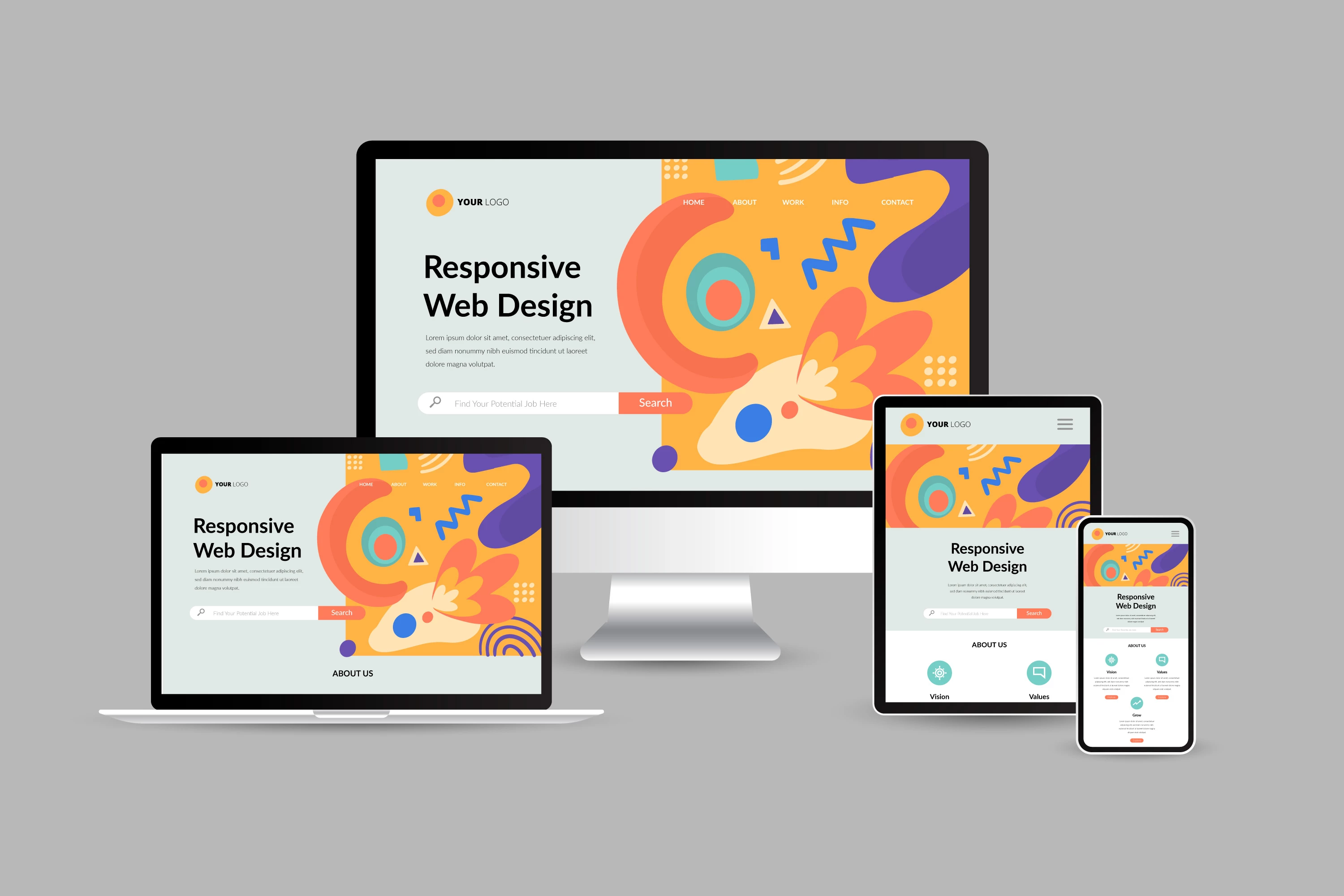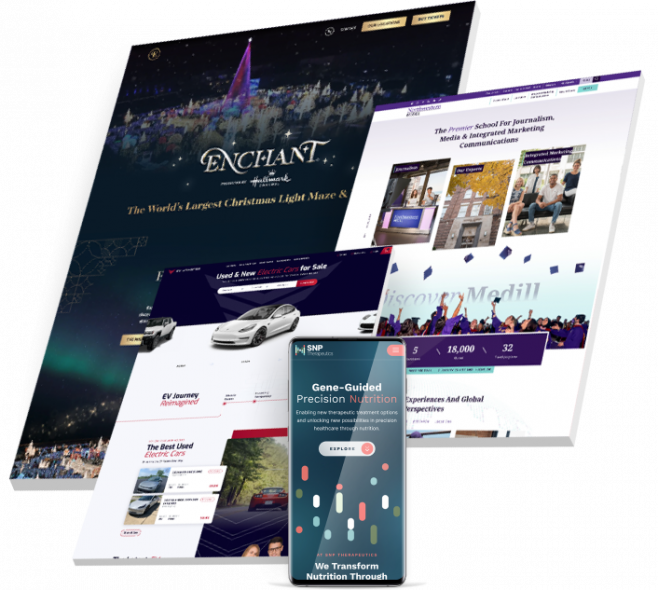Website Design for E-commerce: Best Practices for a Seamless Shopping Experience
Website Design for E-commerce: Best Practices for a Seamless Shopping Experience
Blog Article
Modern Web Site Layout That Catches Interest and Transforms
In an increasingly digital landscape, modern-day internet site design has actually become a crucial consider catching individual attention and driving conversions. By purposefully employing visual power structure, responsive layouts, and engaging interactive components, designers can develop experiences that not just bring in visitors but additionally help with meaningful interactions. Effective call-to-action techniques play an important function in assisting users towards preferred outcomes. As we check out these necessary components, it ends up being clear that recognizing their interaction can substantially influence a site's efficiency and user complete satisfaction. What are the key components that truly make a difference?
Importance of Visual Pecking Order
Aesthetic pecking order is a critical aspect in web site layout, as it guides users' focus and boosts their general experience. By tactically organizing web content, developers can direct customers to the most crucial information first, consequently increasing involvement and improving use.
Including a logical flow in material setup is necessary; for circumstances, putting the most vital details on top of a page promotes immediate acknowledgment. In addition, constant usage of typography, such as varying font sizes and designs, assists develop a clear content framework. This organization not only help in navigating yet likewise develops count on, as customers really feel extra comfortable when they can easily locate what they are trying to find.
Eventually, a well-executed visual power structure not only enhances aesthetic charm however additionally substantially affects user behavior. By focusing on essential aspects and making certain a smooth experience, designers can properly convert visitors into consumers, reinforcing the significance of this foundational design principle in modern site development.
Responsive Style for All Tools
Developing a seamless experience across different gadgets is essential in today's electronic landscape, where customers access sites from tablet computers, mobile phones, and desktop computers alike. Responsive design is a crucial approach that makes certain sites adjust fluidly to various screen resolutions, orientations, and dimensions. By utilizing versatile grids, images, and CSS media inquiries, developers can create formats that preserve visual stability and performance, despite the gadget being made use of.
The value of responsive style extends past aesthetic appeals; it directly influences customer involvement and conversion rates. A web site that operates well on all gadgets urges longer check outs and decreases bounce rates, as customers are most likely to communicate with web content that is very easy to navigate. Additionally, search engines, especially Google, prioritize mobile-friendly websites in their rankings, making receptive design a crucial component of seo (SEO)
Integrating receptive design not just enhances individual experience but additionally simplifies the advancement procedure. By producing a solitary website that works across gadgets, companies can save time and resources contrasted to establishing different mobile and desktop computer variations. Ultimately, responsive layout is a fundamental method for contemporary website design, ensuring accessibility and satisfaction for all individuals, despite their device.
Involving Interactive Aspects
While a responsive style lays the groundwork for a practical website, including appealing interactive components is vital for catching user focus and fostering deeper connections. Website Design. Interactive components, such as animations, quizzes, and clickable infographics, create an extra vibrant user experience, motivating site visitors to invest even more time on the website
Incorporating interactive features can additionally assist individuals with facility information, making it easier to absorb material. Interactive sliders can show product variations, while embedded video clips can provide demonstrations or reviews that reverberate more than static images or message. Gamification strategies, like rewards for engaging or finishing tasks with content, can improve user motivation and retention.
Effective use of interactive elements not only enriches the customer experience however can additionally result in higher conversion prices. By making interactions interesting and delightful, services can grow a sense of loyalty and depend on with their target market. However, it is vital to stabilize interactivity with efficiency; overly complicated features may hinder site rate, adversely affecting individual contentment. Eventually, incorporating properly designed interactive components can considerably raise a web site's effectiveness, driving involvement and find more conversions in today's competitive electronic landscape.
Structured Navigating Practices
Effective navigating is a cornerstone of any effective site, as it straight influences individual experience and web content availability. Streamlined navigation methods guarantee that users can conveniently situate details, improving their interaction with the website. A well-structured navigating menu ought to be basic and instinctive, generally featuring a minimal number of key classifications to prevent Related Site frustrating site visitors.
To accomplish structured navigation, developers need to prioritize an ordered structure that rationally organizes content. Executing breadcrumb trails can supply users with context about their existing area within the website, permitting for seamless backtracking. Furthermore, using drop-down food selections can properly save room while still offering accessibility to subcategories.
Responsive design is important, as navigation needs to be useful across all gadgets (Website Design). Mobile users, specifically, gain from touch-friendly menus and collapsible areas that preserve usability without jeopardizing aesthetic appeals

Reliable Call-to-Action Strategies
A well-crafted call-to-action (CTA) is necessary for directing individuals toward preferred results on an internet site, as it urges them to engage with web content or buy. To maximize their performance, CTAs ought to be clear, compelling, and tactically placed throughout the website.
First, make use of action-oriented language that connects necessity or value, such as "Start," "Join Now," or "Insurance claim Your Price cut." This language not just motivates individuals but likewise establishes clear assumptions about the following actions.
2nd, take into consideration layout components; CTAs must stick out visually with contrasting shades, sufficient whitespace, and prominent positioning. A button that is simple to see and click boosts the possibility of individual communication.
Additionally, individualizing CTAs you could try here based on individual behavior or demographics can considerably boost involvement. Customized messages reverberate extra with customers, driving higher conversion prices.

Conclusion
In verdict, modern-day web site design emphasizes the combination of visual power structure, receptive layouts, engaging interactive components, structured navigating, and effective call-to-action techniques. These components jointly enhance customer experience, making sure that visitors continue to be involved and motivated to discover web content further. By focusing on these design concepts, businesses can dramatically boost customer retention and conversion rates, inevitably bring about greater success in the digital landscape. The continual advancement of web layout emphasizes its critical role in reliable on-line communication and advertising.
In a progressively electronic landscape, contemporary site style has emerged as a critical factor in catching individual interest and driving conversions.Aesthetic pecking order is an essential component in website design, as it guides individuals' focus and improves their general experience.The significance of responsive design prolongs beyond aesthetic appeals; it directly impacts user engagement and conversion rates.Incorporating receptive style not only enhances individual experience but additionally streamlines the development process. Inevitably, receptive style is a fundamental technique for modern internet site design, making certain availability and contentment for all individuals, regardless of their gadget.
Report this page